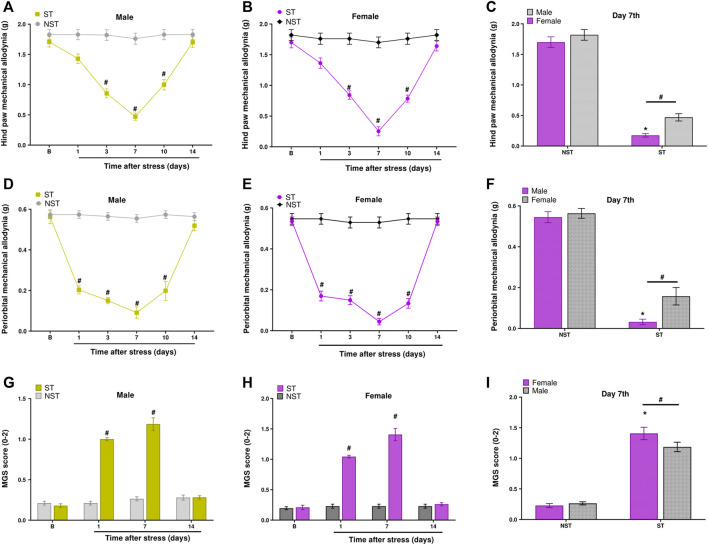FIGURE 2.
Unpredictable sound stress evokes periorbital mechanical allodynia (PMA), hind paw mechanical allodynia, and grimacing pain behavior in mice. Hind paw mechanical allodynia was measured in (A) male and (B) female mice at different time points after stress (ST group) or control (non-stressed group, NST). (C) Comparison of hind paw mechanical allodynia between male and female mice at day 7 after stress or in NST group. PMA was measured in (D) male and (E) female mice. (F) Comparison of PMA between male and female mice at day 7 after stress or in the NST group. Grimacing pain behavior was evaluated in (G) male and (H) female at different time points after stress (ST group) or control (non-stressed group, NST). (I) Comparison of grimacing pain behavior male and female mice at day 7 after stress or in NST group. Baseline measurements (described as B in the graph) were taken before induction. Spontaneous nociception was analyzed by the mouse grimace scale (MGS). Data are expressed as mean ± S.E.M. (n = 8). # p < 0.05 when compared to the NST group, and between days (1, 7, and 14 post-stress) comparing the ST group and NST group. *p < 0.05, when compared between the sexes within the ST group [repeated measures two-way ANOVA followed by Bonferroni’s post hoc test].

